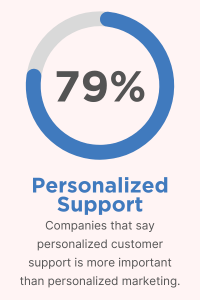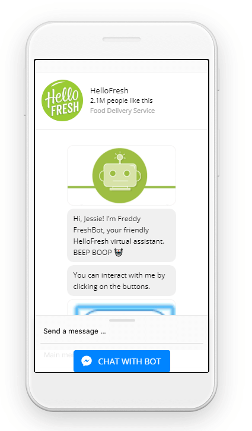By
EJ Bowen
|
Date Published: August 10, 2023 - Last Updated September 22, 2023
|
Comments
Traditional contact centers have long been at the forefront of answering customer requests and challenges. These contact centers have relied mainly on inflexible scripts to direct client interactions, leaving little room for individualized or empathic responses. As a result, clients often find themselves navigating through a labyrinth of predetermined terms, leading to frustration and discontent.
There's real potential for a new era of customer service with generative AI. The technology powered by natural language processing (NLP) and deep learning promises to transform interactions. It enables organizations to engage in authentic and dynamic discussions with customers, encouraging previously unlikely levels of customization.
Research from Plum Voice found that 60% of customers will hang up if they wait more than a minute on hold. Furthermore, 83% of customers want a resolution on their first call, and 48% say they would switch brands if they think they could get better service elsewhere.
Generative AI excels in providing efficient and personalized experiences. But how will it and should it impact the contact center? Let's break it down.

Understanding Generative AI in Contact Centers
Generative AI offers an exciting approach to customer care that goes beyond the limited scripts typically used in contact centers. This technology boosts customer interactions to new heights by leveraging NLP and deep learning.
Instead of giving the same canned response, generative AI learns from vast datasets and adjusts its output based on context, tone, and behavior. Contact center staff can respond empathetically and deliver appropriate solutions, ultimately resulting in happier and more loyal customers.
According to McKinsey, how a client is treated significantly impacts their overall satisfaction with their purchase. Customers' opinions of a brand can be influenced by the brand's use of generative AI because of the technology's capacity to create individualized and sympathetic interactions.
Salesforce found that 58% of customers found it most aggravating when customer support representatives could not address their concerns. With the help of generative AI's extensive knowledge base and real-time learning capabilities, agents can effectively respond to inquiries, reducing wait times and maximizing satisfaction.

Generative AI offers the benefit of addressing problems before they even become problems. AI models can anticipate issues and intervene before they escalate by continuously learning from past interactions. This not only exhibits an exceptional level of care for customers, but it also saves time for both customers and agents.
Personalized Interactions and Empathy
Personalization has emerged as a strategy for boosting customer satisfaction and retention in the contact center. With the help of generative AI, contact centers can provide customers with unique, meaningful interactions every time.
The revolutionary power of generative AI lies in its capacity to instantly process massive volumes of data. AI helps agents provide better customer service by analyzing purchase history, preferences, browsing behavior, and past interactions. The level of customization shows that the company cares about customers and their requirements, which builds trust and loyalty.
Incorporating sympathetic language production gives AI-powered interactions a more human quality. Emotional indicators in customer queries can be recognized and addressed by generative AI models. This capacity is invaluable when dealing with disgruntled, confused, or angry consumers. Empathy is sometimes lacking in traditional scripted encounters, but generative AI can provide responses that respect the customer's emotions.
Care, compassion, and satisfaction weave into the customer experience's grand fabric through individualized interactions and empathy. Generative AI's data processing, emotion recognition, and response customization capabilities position it as the driving force that transforms contact centers from robotic exchanges to heartfelt encounters.
Case Study: Bouygues Telecom
A European telecommunications company, Bouygues Telecom, teamed up with IBM Consulting to use generative AI to change how their contact center operations work.
Before using generative AI, Bouygues Telecom had trouble getting the most out of the 8 million conversations between customers and agents. Even though there was a lot of helpful information, it was hard for human agents to pull out and use all of the details in their customer relationship management (CRM) tools. Because of time limits, automatic transcriptions of past calls were often unread. IBM Consulting developed base models to help with automatic call summarization and topic extraction.

This new idea changed everything. IBM's generative AI technology-enabled instant, accurate, and actionable insights from interactions with customers, which led to significant changes in operations. Workers could make personalized suggestions and solutions. Because of this, Bouygues Telecom saved over $5 million on operations and cut both pre- and post-call operations by 30%.
Reducing Wait Times and Queue Lengths
Long wait times can make customers angry and unhappy, and even stop returning. One study found that more than 60% of customers are prepared to wait less than two minutes in a phone queue, while 13% will not wait at all.
Integrating chatbots and virtual assistants powered by generative AI represents a paradigm shift for contact centers, particularly in addressing the persistent problem of wait times. Businesses can substantially improve customer experiences, streamline operations, and cultivate long-lasting relationships by leveraging these solutions.
Generative AI-powered chatbots and virtual assistants have the remarkable capacity to manage an abundance of customers simultaneously. In contrast to conventional contact centers, where limited human agents frequently result in lengthy wait periods, AI interacts with multiple customers simultaneously. Chatbots and virtual assistants deliver prompt and effective responses, whether addressing routine questions, providing product information, or guiding users through troubleshooting steps.
The significance of shortened wait periods cannot be overstated. An expeditious and seamless customer service interaction directly correlates to increased customer satisfaction. In today's fast-paced society, where time is of the essence, consumers place a premium on timely resolutions. Businesses can provide near-immediate assistance through generative AI, increasing customer satisfaction and, consequently, higher customer retention rates.
An illustration of an effective customer service chatbot is HelloFresh's creation, Freddy.

HelloFresh introduced Freddy to administer surveys and quizzes to Facebook users. Beyond its conversational scope, Freddy efficiently delivered automated deals and recipe suggestions to users who correctly engaged with the quizzes. Despite not excelling in complex conversations, Freddy demonstrated remarkable outcomes by decreasing response time by 76% and boosting incoming messages by 47%. This success stemmed from Freddy's adeptness at promptly addressing multiple queries, significantly lowering the average response time.
Continuous Learning and Improvement
With every customer interaction, generative AI models gather a wealth of data. These models assess nuances in communication, client preferences, and issue resolutions, allowing them to modify their replies over time. This ongoing learning process ensures that subsequent encounters become more accurate, relevant, and matched to specific customers' demands.
It is impossible to overestimate the significance of continual model training and refining. As human agents require ongoing training to stay current and enhance their skills, generative AI models need continuing care. Regular updates of models, driven by new data, industry trends, and customer feedback, ensure that AI aligns with changing customer expectations.

Furthermore, continuous model upgrades are critical for sustaining peak performance. As contact center interactions become more complex and diversified, AI models must be adjusted to handle a wider range of requests and circumstances. Continuous enhancement efforts ensure that generative AI can answer complicated questions, effectively resolve challenges, and foster meaningful relationships.
Several studies emphasize the importance of AI's learning capabilities. According to Gartner, by 2023, 40% of customer support tasks that require the involvement of front-office staff will be done by AI, up from 7% in 2019. This projection emphasizes the expanding relevance of generative AI in customer interactions and the importance of investing in continuous learning and improvement.
* * * * *
Generative AI is a disruptive force in customer service. Its capacity to build personalized engagements and foster empathy establishes a new norm that resonates with customers. AI-powered chatbots and virtual assistants significantly minimize wait times, increasing customer satisfaction and retention.
Continuous learning is essential for generative AI, allowing contact centers to adapt and improve. Businesses ensure optimal performance and proactive customer service by leveraging data from each contact and implementing regular model training. Rising customer expectations for quick query resolution highlight the importance of such a strategy.
The potential of generative AI is not speculative; current statistics and trends support it. As the role of AI in customer service develops, including generative AI becomes a strategic priority to create outstanding experiences that encourage loyalty and long-term success. In this changing world, generative AI is more than an option; it is the path to a future where customer experiences are truly revolutionary.